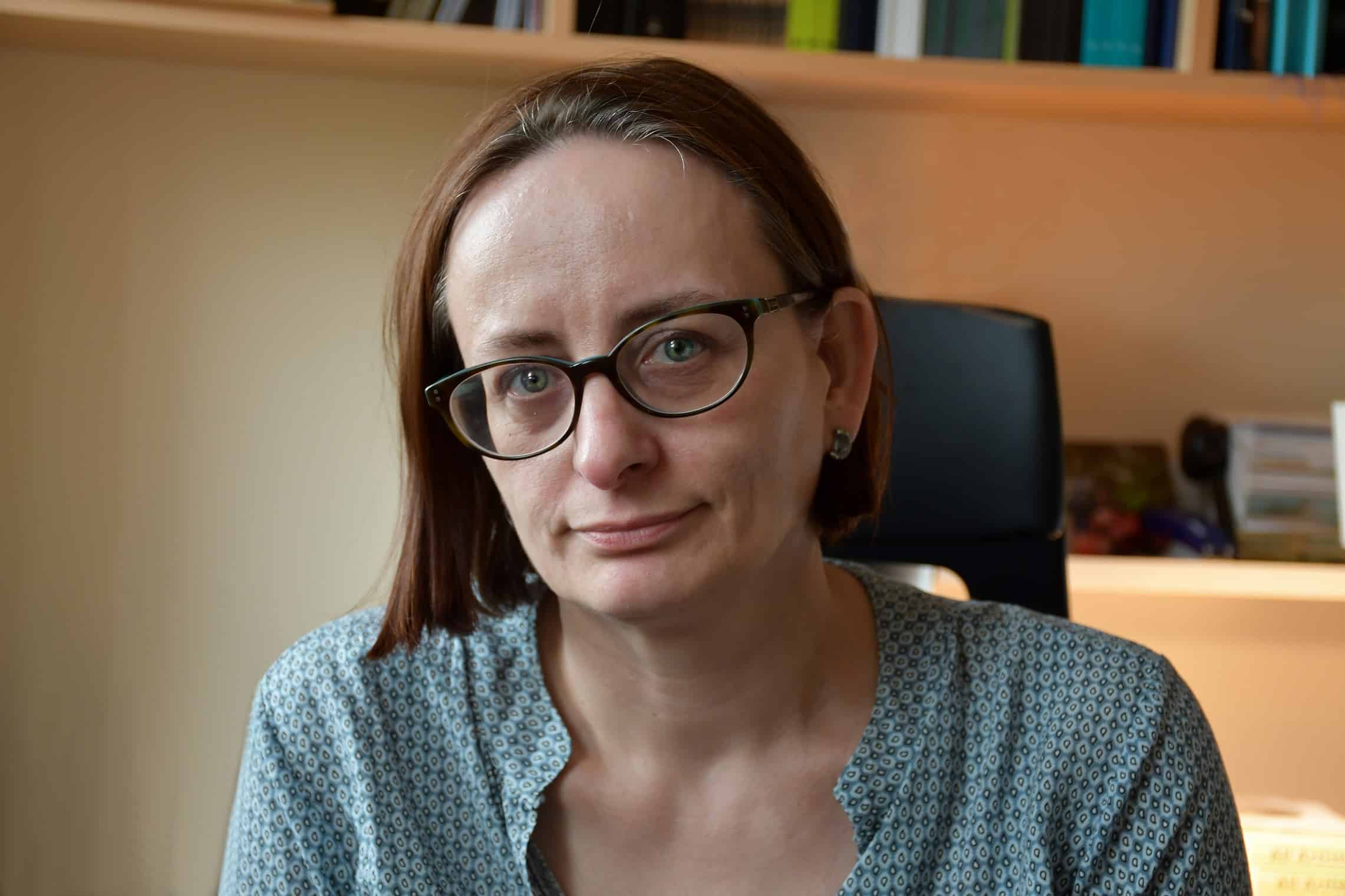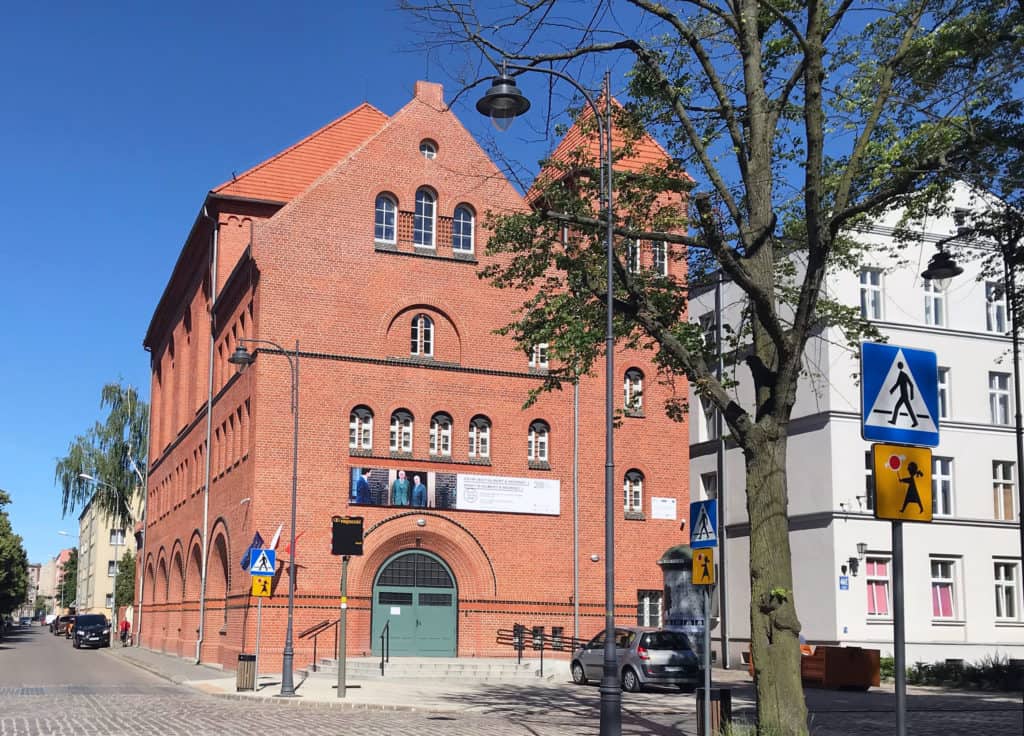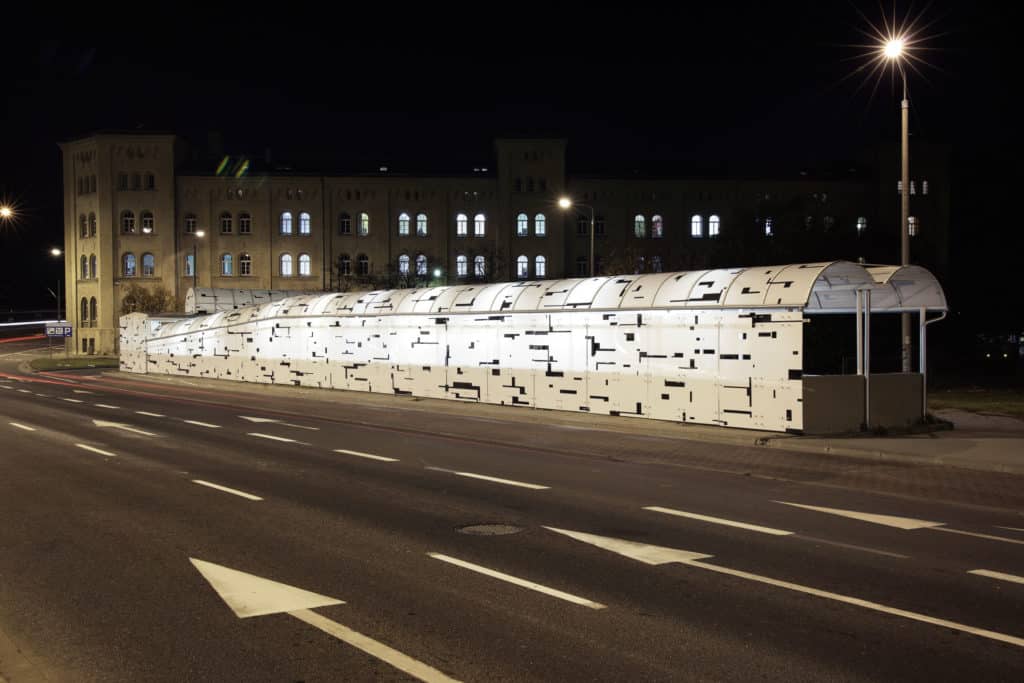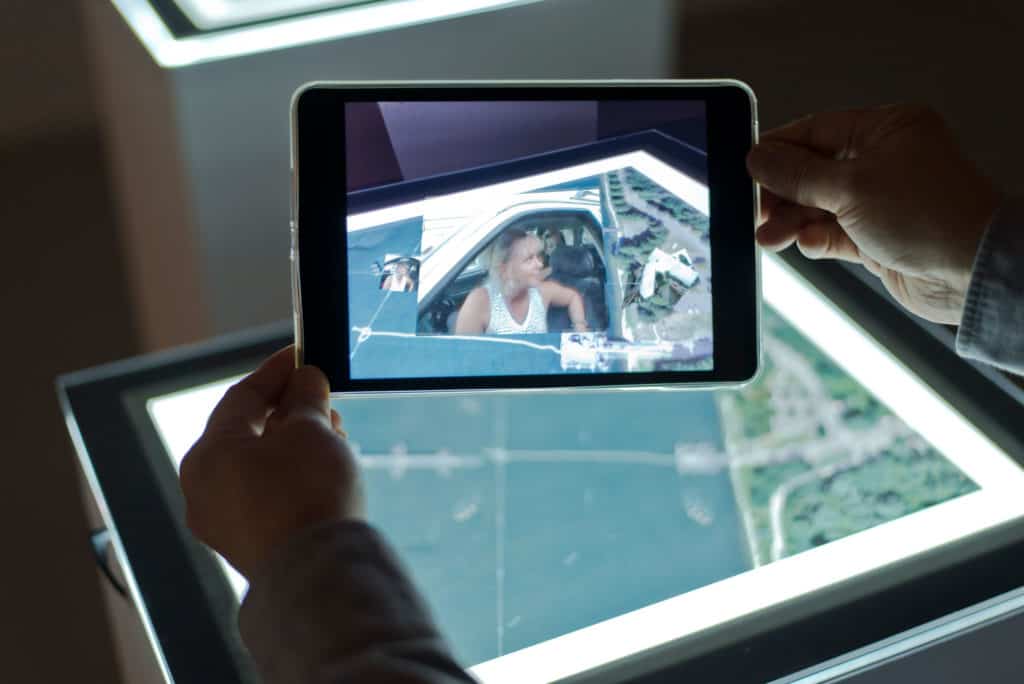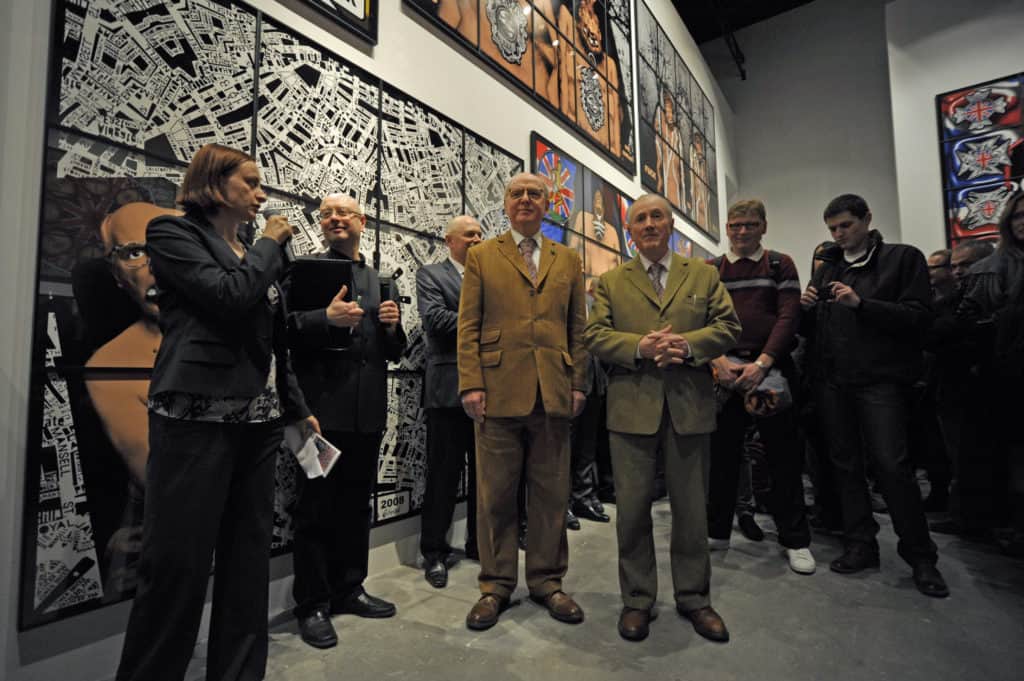We asked the director what she is most proud of, Laznia’s flagship programme “Art + Science Meeting”, the international artists’ exchange, as well as how she developed a close and friendly relationship with Gilbert & George.
Michalina Sablik: This year LAZNIA is celebrating its 20th anniversary. What are the most important changes that the institution has undergone throughout this period and how has its programme evolved?
Jadwiga Charzyńska: I have been working in LAZNIA Centre for Contemporary Art for 16 years and I became its director 15 years ago. What I am most proud of is the fact that our exhibitions and related events successfully expand knowledge of contemporary art among our audience. We realise that the reception of contemporary art is complicated, and in view of that, we provide exhibition guides, organise meetings with artists whose works are on show, as well as with researchers. In this particular way, we address the need for additional guidance and commentary, thus allowing our visitors to fully enjoy the exhibitions. For the last 20 years the scope of our activities has been expanding. We even opened Laznia 2 branch, which is situated in the Nowy Port district. Our activities are focused around four main areas, namely art in the public space, international exchange, art & science, as well as social education. The number of visitors itself tells a lot about the increasing role of our institution. During our first few years Laznia was visited by a few thousand viewers annually. Today their number has risen to an impressive 30 000.
M.S.: During the last 20 years we have also witnessed major changes in the landscape of art institutions in Poland. Numerous public and private art institutions or, generally speaking, places where works of art are presented, were established during this period. Can you tell us how you envisage the role of LAZNIA Centre for Contemporary Art in this complex environment of art institutions in Poland?
J. C.: Laznia Centre for Contemporary Art was established at a time when artistic circles in Poland were captivated by critical art. The strong influence of this movement on our institution was clearly visible during the first few years of its existence. Since the centre is state-funded, it has to fufill a certain duty. Taking this into account and observing the constantly evolving art-related environment we decided to concentrate on the local community while inventing our programme. On the other hand, we managed to gain wider recognition throughout Poland and abroad because we work together with prominent artists, who are well-known worldwide. Our flagship project is “Art + Science Meeting” and an international artists’ exchange, to whom we give an opportunity to travel to different parts of the world. Such projects are still rare in Poland. Generally speaking, we try to be pioneers in our country when it comes to certain activities and present the newest trends and phenomena in art. I believe that it is clearly visible.
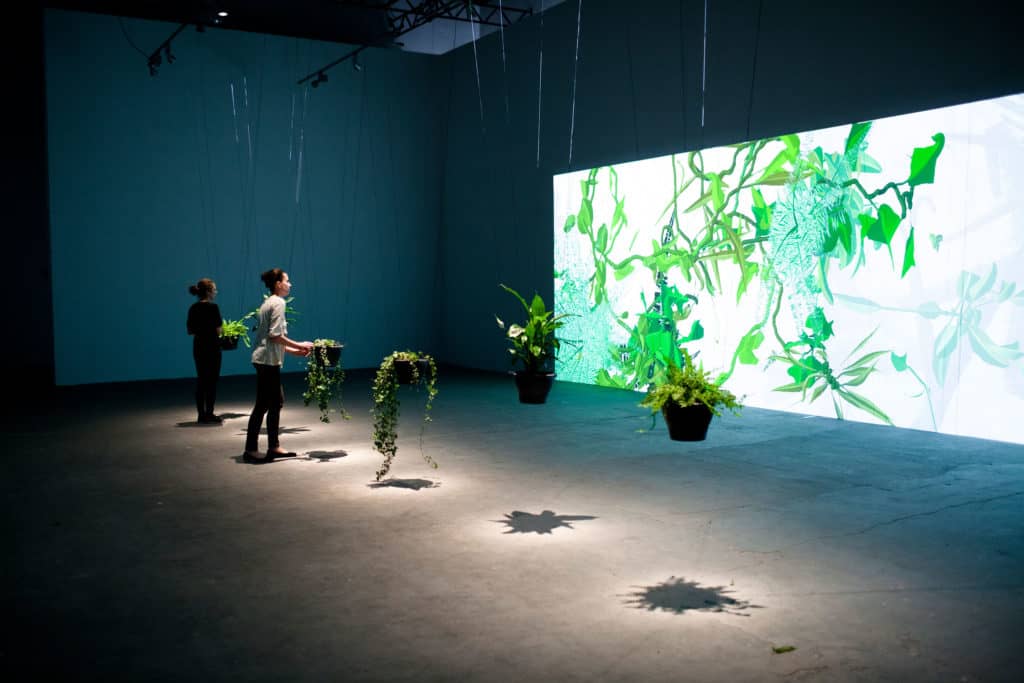
Eau de Jardin at exhibition “Wonderful Life” in CCA LAZNIA, Christa Sommerer and Laurent Mignonneau, 2012, photo Krzysztof Miękus
M.S.: All of us at Contemporary Lynx are eagerly awaiting the exhibition by Gilbert & George, the famous UK artist duo, who already presented their works in an exhibition at LAZNIA Centre for Contemporary Art in 2012. This will be an incredible birthday present! Why have you decided to invite these artists to Gdańsk once again?
J. C.: Our collaboration with these two artists indeed started with the exhibition entitled “Jack Freak Pictures”, which we presented in 2012. This exhibition became the foundation for our programme dedicated to British art. Quite surprisingly, we managed to develop a relatively close and friendly relationship while preparing the exhibition. After this project finished, I have tried to visit the artists whenever I have been in London and I feel truly honoured to be so welcomed. Since the exhibition in Gdańsk was really successful and because we bonded so well, the artists both willingly agreed to engage in a joint effort once again to celebrate our birthdays together. While Laznia celebrates the 20th anniversary this year, Gilbert & George have been working together for a staggering 50 years!
Although their visit to Poland will be really short, the schedule is going to be packed. In the morning, the artists will meet students of the Academy of Fine Arts and in the evening there will be a meeting with the audience in Laznia 1. The meeting will be hosted by Michael Bracewell, a writer and philosopher, who has been working together with the famous duo since the 1970s. During the visit we are also going to be screening films documenting the life and work of Gilbert & George, as well as a recording of “The Naked Shit Songs” – a performance presented last year at a festival in Amsterdam. This performance was based on an interview with Gilbert and George who spoke to the Dutch journalist Theo van Gogh, brutally murdered just a month later. It is an intriguing story about our world and the clash of conflicting attitudes. It shows us how certain decisions may influence our lives. During the artists’ visit to Laznia our visitors will also be able to obtain Michael Bracewell’s book “What Is Gilbert & George?”. It is an engaging, easy-to-read guide on what it means to be a true artist. We decided not to print the whole book in Polish. Instead, we will add a supplementary booklet to every book with Bracewell’s text translated into Polish.
M.S.: Many galleries in the big cities are constantly looking up to private galleries located in Warsaw and following trendy curators. While these institutions try to develop similar programmes and revolve around the same topics, Laznia is doing just the opposite with its unique programme and independent activities. You stand out also because you work together with numerous artists and curators from abroad, not only from Europe, but also from Russia, South America and Asia. How do you manage to combine the global and the local phenomena so successfully?
J. C.: Distinctiveness is what matters most to us. Our primary fields of activity were collectively agreed upon as a result of team discussions. We remain closely interconnected with the strategy of our city and region but, on the other hand, we also wish to elaborate on themes which have not yet gained popularity in Poland and even those that are not familiar to the Polish audience at all. We do not follow fashion and the rationale dictated by PR strategies. We rather focus on the needs of our city and the whole region, which are listed in developmental strategies. Nevertheless, we look for unique themes in art which we consider worth presenting to the Polish audience. When we decide which artists to invite we look at their projects and try to find something that fits into one of the four basic areas that our programme is built around, for example, art in the public space, international exchange, art & science and social education. These clear guidelines allow us to successfully combine local and global matters.

“Inner colour” Youngdon Jung project took place in the frames of Youngdon Jung artist in residency stay being part of CCA Laznia Artist in Residency Program, 2014, photo: Youngdon Jung
M.S.: But how do artists themselves manage to combine the global and the local?
J. C.: They work with the local community and, thanks to it their initial ideas are quickly confronted with the ideas and attitudes of their opponents. This results not only in works combining different cultures, such as the work by Youngdon Jung entitled “The Colour of the Inside”, where he combined a local legend with the method of using colours to describe human feelings that is only familiar to Far Eastern communities. We also encourage discussion on aesthetics in the public space. Kamila Szejnoch involved herself in such discussion with the owners of garages in Nowy Port in Poland. As part of her project entitled “Falowiec Colour System” she encouraged them to paint these garages and made them more aware of the importance of aesthetics in the overall landscape.
Our “Cities on the Edge” exhibition series also provides an engaging experience which broadens our audience’s horizons. One may think that we are just presenting some exotic places located far away from us. However, a closer look makes you realise that the issues we present at these exhibitions are strangely familiar to us all. The only thing that actually sometimes differs is the time when a given phenomenon or issue gains importance at a given location. This time difference is particularly visible when we compare works by Polish artists with artists from places such as Cuba.
M.S.: Laznia is also in charge of a very interesting artistic residency programme. It is actually a part of the broader project, called “The Outdoor Gallery of the City of Gdańsk”, aimed at revitalising the lesser developed districts of the city. Every single city, district and community has its own needs and expectations, and faces its own challenges. I wonder how artists who come from various locations and represent different cultures manage to create meaningful projects which become an integral part of the city landscape. After all, they visit a particular place only for a short while.
J. C.: You probably meant to ask me how artists who come from remote places and with totally different cultural backgrounds are able to create influential works in Poland. The answer is quite easy – we invite only good artists! Interestingly enough, no matter where someone lives, he/she faces the same problems, has similar passions and desires as other people on our planet. One such basic, universal need is the desire to interact with works of art and come into close contact with culture. When we select artists we would like to work with we pay attention to the individual’s approach to each idea. We usually invite this artist for an initial visit in order to first collect materials and to gather information around which the whole project would eventually be developed. There are also specific artists’ expectations that have to be taken into consideration while working on these projects. What follows is a combination of artist’s efforts and the materials they use in the creative process. Is this all a short-term affair or will the process bring about long-lasting results? The answer to this question depends on a particular artist’s vision and on how he/she decides to use the materials in place.
In my opinion, one of the most engaging and intriguing projects created as part of the artist residency programme was Maj Hasager’s exhibition entitled “Grudnie” (Decembers). The artist put herself in the role of a documentary filmmaker. She collaborated with a group of women who participated in classes at the University of the Third Age. The result of their common effort was a moving documentary highlighting the vital role and everyday struggles of women who had to face the upheavals of the tumultuous December 1970 and December 1981 events.
M.S.: Laznia is one of the institutions which welcome nomadic artists who travel around the world and create site-specific works and projects in various locations. You also discuss and give a lot of thought to art in the public space, e.g. during conferences or in publications that you have issued. I wonder what the public space really is and why is Laznia Centre for Contemporary Art particularly interested in it?
J. C.: There is no simple definition of public space. We can define this notion from a sociological point of view, in literal or abstract terms. Such is also the case with the definition of “art in the public space”. It is about physical and tangible objects, but it can be associated with ephemeral projects and subjects as well. Nowadays, we also have to think about virtual reality as the extension of public space.
We became interested in this notion because, as I have already mentioned, we felt the need to change the public perception of our institution and, generally speaking, of the place. Moreover, the local community needed better living conditions. This need was answered through revitalisation programmes but, nevertheless, it made us change our concept relating to public space a little bit and definitely turned it into a much stronger component of our overall activity.
![The Semi-Living Worry Dolls [AKA Tissue Culture &Art(ifical)] Womb, at the „Crude Live” at the “Crude Life” exhibition, CCA LAZNIA, 2012, photo Krzysztof Miękus](http://contemporarylynx.co.uk//wp-content/uploads/2018/06/The-Semi-Living-Worry-Dolls-AKA-Tissue-Culture-Artifical-Womb-at-the-„Crude-Live”-at-the-“Crude-Life”-exhibition-CCA-LAZNIA-2012-photo-Krzysztof-Miękus-1024x521.jpg)
The Semi-Living Worry Dolls [AKA Tissue Culture &Art(ifical)] Womb, at the „Crude Live” at the “Crude Life” exhibition, CCA LAZNIA, 2012, photo Krzysztof Miękus
M.S.: The Art + Science Meeting curated by Ryszard Kluszczyński is one of the most interesting and innovative of your projects. For many years you invited artists working with the subjects of posthumanism (Masaki Fujihata), bioart (Guy Ben-Ary), new media art precursors (Ken Feingold) or representatives of radical body art (Stelarc) to present their exhibitions and performances within this project. Why are you interested in the topics I just listed and why do you devote so much time to them?
J. C.: Art should provide the audience with an opportunity for deeper reflection, comment on contemporary reality and the changes that our civilisation is undergoing. In the broader sense of the word, culture is directly influenced by how much power art exerts and how distinctly its voice is heard.
Professor Ryszard Kluszczyński, who selected materials for the majority of exhibitions within this series, also meticulously works on the quality of the accompanying published books to the Art + Science Meeting exhibitions. Thanks to these efforts it is now much easier for us to communicate and negotiate with artists who we invite to collaborate with us. These books look nothing like typical exhibition programmes or catalogues. Conversely, they describe certain phenomena in art, as well as trends and art movements which shape the creative activities of the artist whose exhibition we currently hold. The book “Crude Life: The Tissue Culture & Art Project. Oron Catts + Ionat Zurr” was the first publication of this kind issued to discuss the artistic activities of the innovative duo from Perth, Australia. Stelarc informed us that, in his opinion, the book we published about his art is the best one that was ever published. Stelarc, Maski Fuijhata, Oron Cattz and Ionat Zurr, Ken Feingold, Monika Feischmann and Wolfgang Struss, Christa Sommerer and Laurent Mignonneau, as well as other artists who participated in Art + Science Meeting are courageous enough to cross the borders of traditionally understood art, even when it comes to the tools used and the studied material. Many of them perceive themselves as scientists, rather than as artists. Art serves as a catalyst and artistic activities are an attempt to stand out and distance oneself from modern civilisation.
Personally I opted for unconventional projects from the very beginning and have always been captivated by science fiction.
M.S.: How do you imagine Laznia Centre for Contemporary Art in 10 years from now? What are your goals and what challenges may lay ahead?
J. C.: Currently we are working with Masaki Fuijhata on a project which is to be presented in Gdańsk. We are also preparing Chris Salter’s exhibition, which will take place in 2020. I’ve been dreaming about creating an archive of materials relating to art and science. We are also collaborating with Jasia Reichardt, who has already become a legend when it comes to unique exhibitions on the topics of art and technology. In 2016 her achievements were recognised by organisers of Ars Electronica and she was awarded a “Golden Nike”. This was quite unusual, because earlier the prize was only awarded to artists.
The second essential goal for us will be the promotion of art in the public space, which we wish to continue. Our programme emphasises the importance of international collaboration and education. These two aspects are in many ways connected with the activities in the city space. Moreover, they lie on the intersections between art and science.
During a conference organised this year within the International Congress of Curators of Contemporary Art in Gdańsk, Roger Malina wished that we celebrate our anniversary in fifty years times on the Moon. Who knows, maybe we will cross the borders of today’s human perception? I am sure that Elon Musk or some other visionary will be willing to help us in that matter. Did you know that Jan Heweliusz was born in Gdańsk? Is it pure coincidence that Frombork, i.e. the town where Copernicus moved the Earth and stopped the Sun, is so close to us?

IKT memebers in front of the Laznia 2 during first day of the IKT International Association of Curators of Contemporary Art, 2018, photo Helena Szczepańska
The opening of „Jack Freak Pictures” at LAZNIA CCA, 2011, photo Paweł Jóżwiak




